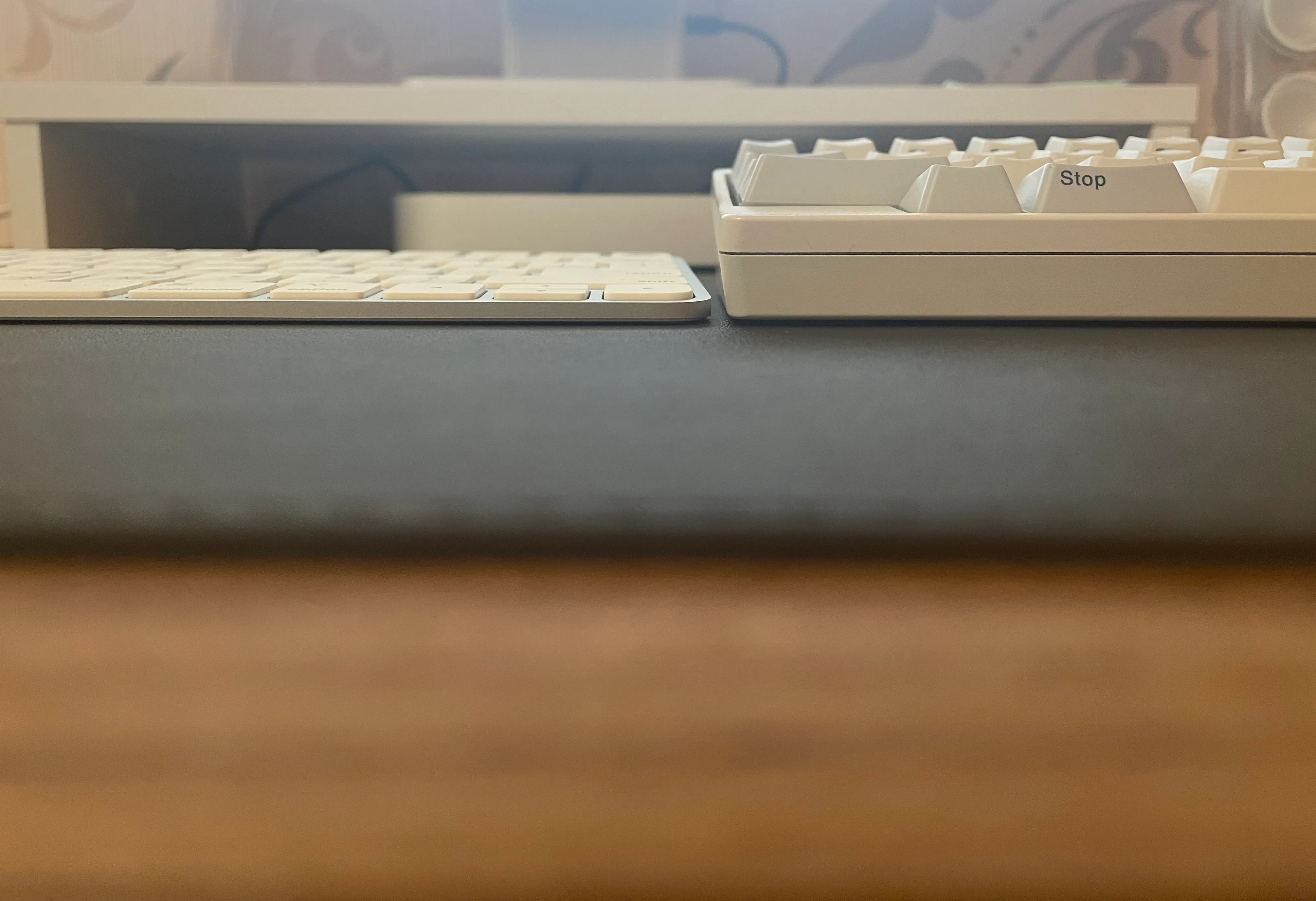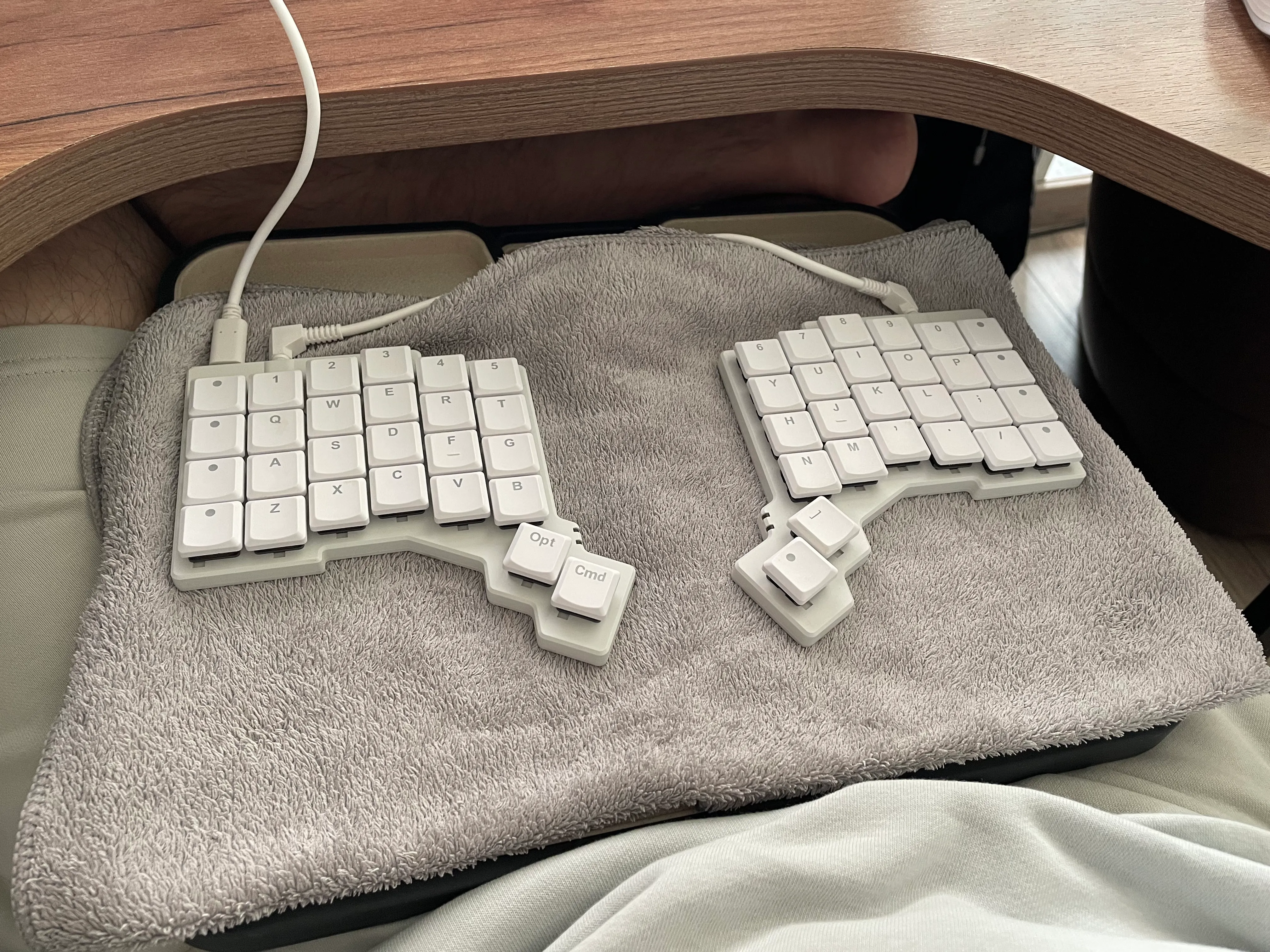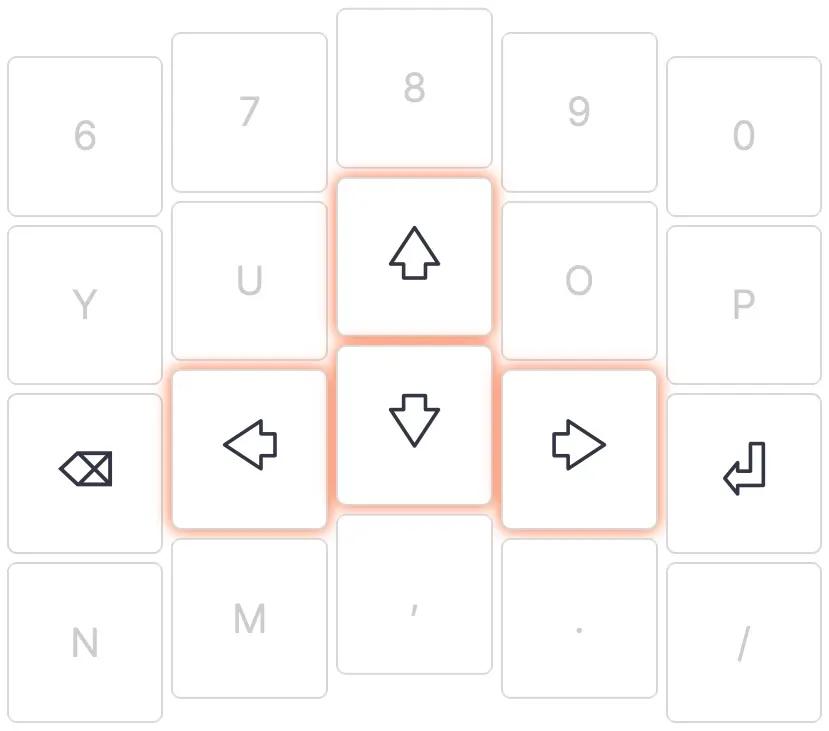Practical Keyboard Ergonomics
Hacking without pain
The advice is ordered by the amount of enthusiasm you’ll need to implement it.
First off, adjust your chair. Easily the best effort-to-improvement ratio on this list. Make sure your elbows and shoulders are not elevated for 8+ hours a day, it’s not natural.
- Stand in front of the chair. Adjust the height so the highest point of the seat is just below the kneecap.
- Sit on the chair and keep your feet flat on the floor.
- Check that the clearance between the front edge of the seat and the lower part of the legs (your calves) fits a clenched fist (about 5 cm or 2 inches).
- Adjust the back rest forwards and backwards as well as up and down so that it fits the hollow in your lower back.
- Sit upright with your arms hanging loosely by your sides. Bend your elbows at about a right angle (90°) and adjust the armrests height until they barely touch the undersides of the elbows.
- Remove the armrests from the chair if this level can not be achieved or if armrests, in their lowest adjustment, elevate your elbows even slightly.
- Tilt the seat itself forwards or backwards if you prefer.
Canadian Centre for Occupational Health and Safety — How to Adjust Office Chairs
Vary it up. Take breaks. Move. Don’t keep a static posture for too long. Go for a walk. Weightlifting and pull-ups help a lot by keeping wrist muscles in good shape. Try some voice coding.
Relax more often. Suppressed emotional stress can cause pain by tensing muscles or reducing blood flow. This is no joke 1. I healed RSI using only my mind 2. Josh Comeau's experience with RSI 3. How I stopped the RSI pain that almost destroyed my programming career . Many chronic pain conditions are caused by the brain as a way to distract us from repressed emotions.
Bring your keyboard closer. If the keyboard is too far from you, you’ll hyperextend your arms to reach it. Keep your elbows under ~110°.
Use a low-profile keyboard. The lower, the better. If your keyboard is higher than your wrists, it forces you to hyperextend them. If your keyboard has tilt stands, don’t use them. They exist to improve key visibility for non-touch typists.
Type properly. Press the spacebar with your right hand. Use both hands for shortcuts—right-side modifiers exist for a reason. Learn touch typing, using the correct fingers for the correct keys; Keybr is the best tool for this. If you have deeply rooted bad typing habits, a great way to break them is to buy a split ortholinear keyboard. It will drop your speed to 15 WPM, but in return you’ll get as close to a clean slate as you can. A year ago I was at 150 WPM, but I was typing with only five or six fingers, and they pressed God knows which keys. I bought the ZSA Voyager, and it forced me to learn from scratch. It was very painful, but worth it—a night-and-day difference.
Float your hands while typing. Don’t use a wrist rest— it’s bad for you 1. Harvard RSI Action: Preventing RSI 2. Kinesis: Wrist Extension . Wrist rests apply pressure to the underside of your wrist, compressing tissue and reducing blood flow. Don’t confuse wrist rests with palm pads that you can find on some ergonomic keyboards; palm pads provide support without impacting circulation. It’s much easier to float-type on a low-profile keyboard with a properly adjusted chair. Rest your hands when you’re not typing.
Put the keyboard on your lap. Some people call this «Russian style» 1. How many of you are playing Russian style? 2. GeekHack: Typing with keyboard on the lap . This is actually my favorite advice on this list—I program like this 95% of the time. Negative tilt improves blood flow, you don’t depend on an ergonomic desk, it makes arm extension impossible, and your elbows end up in a good ergonomic position. It’s also the most comfortable way to float-type. Compact keyboards work best this way—if your keyboard has a numpad, it’s probably too wide. I used an HHKB this way for years and it was amazing. My current setup is the Voyager on a cutting board with a soft towel on top. Peak ergonomics.
Avoid working in the cold. Don’t sit under an AC. Cold reduces blood flow.
I spent three years unable to work as a programmer, and there’s a good chance I could have solved the problem just by wearing warmer clothing.
Itamar Turner-Trauring — How I Stopped the RSI Pain That Almost Destroyed My Programming Career
Cut back on salt and sugar. This one’s uncommon. My dentist gave me this advice. High glucose levels can stimulate inflammatory markers in tendon cells, contributing to RSI. Salt can cause swelling. When tissues swell from fluid retention, they can compress the median nerve as it passes through the narrow carpal tunnel in your wrist and trigger symptoms.
Put arrow keys on the home row. Great article about this. If you do, you can go one step further and put Backspace to the left of the arrows and Enter to the right of the arrows. This reduces right-hand movement a lot. Backspace is the second most used key after space, and Enter is in the top 10. I did this two years ago, and now I can’t live without it. It feels so natural that when I was writing the first draft of this post, I forgot to mention it, though it was the default on every computer in the world.
Try layers and home row mods. ZSA boards are great and support layers at the firmware level via QMK. Or try it with any keyboard using software like Kanata or KMonad. Remember: home row mods aren’t for everyone. More layers ≠ more ergonomics—you can actually overuse your thumbs. I use a ZSA Voyager with one layer, and it’s perfect.
Try an alternative layout. Dvorak, Colemak, Workman, Sturdy, there are a lot of them 1. Which alt keyboard layout should I learn? 2. Should I use an alt layout? . Switch only as a last resort after you’ve tried everything else and still have problems.
Cut back on coffee. Caffeine constricts blood vessels and ramps up stress, both of which can make RSI worse.



